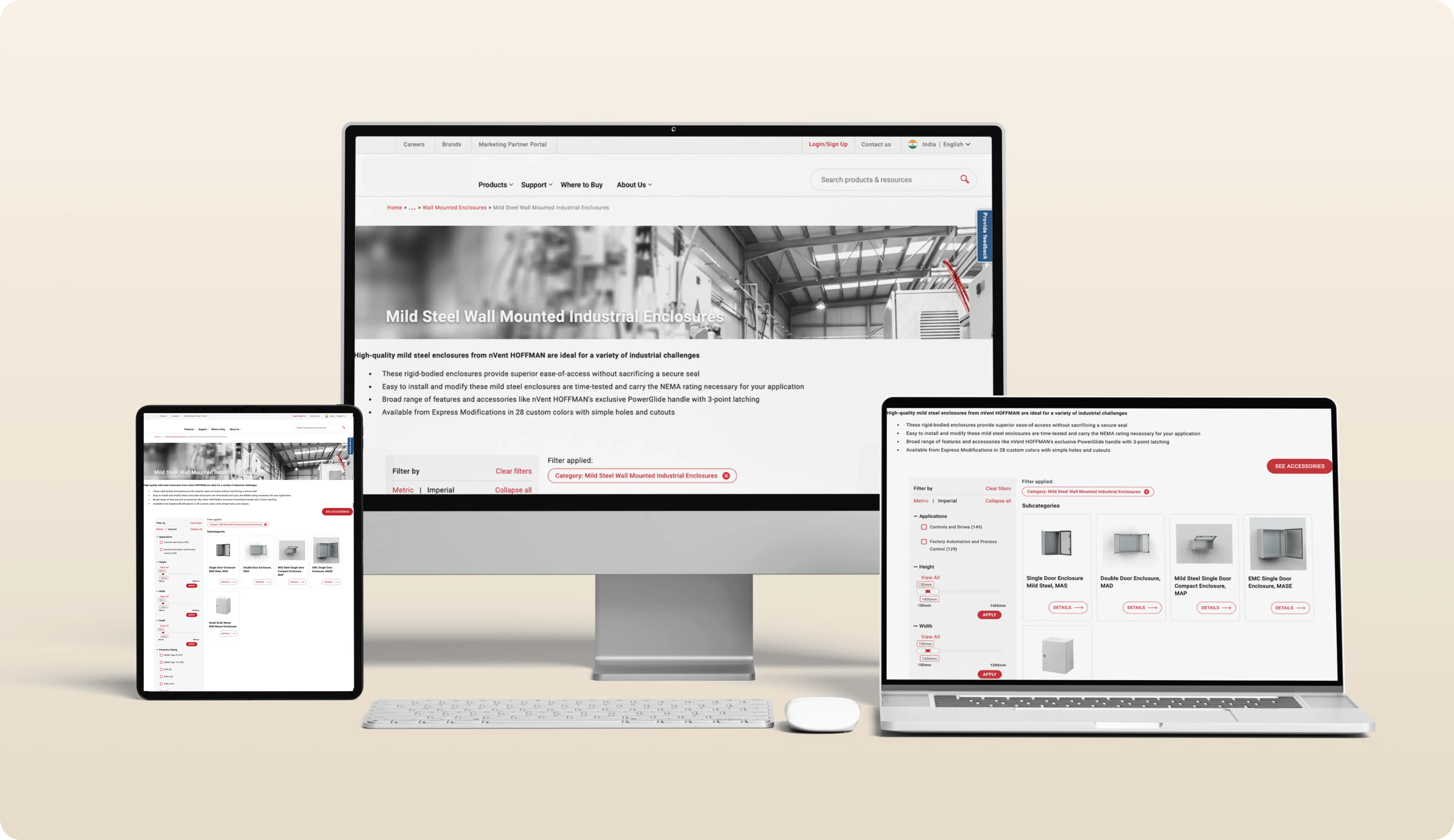In multi-brand enterprises, each brand often operates its website. While this allows brand-specific control, it creates long-term maintenance and scalability issues.
Different technology stacks, content models, and navigation patterns make it difficult to maintain data consistency, reuse content, and roll out features across the organisation.
As product lines expand or acquisitions occur, the lack of a centralised framework slows delivery and increases operational costs.
A unified platform addresses these constraints by enabling consistent user experiences, centralised governance, and standardised deployment processes.
Overview
We partnered with a global manufacturer in the electrical and industrial solutions sector to consolidate multiple brand websites into a single platform.
The existing environment consisted of separate websites with different technical foundations and data structures. This setup required duplicate updates, produced inconsistent user experiences, and complicated cross-brand initiatives.
Key challenges being:
- Content updates repeated across multiple platforms.
- Variations in branding and navigation affecting user familiarity.
- Separate development cycles for onboarding new brands.
- Difficulty in launching coordinated global campaigns.
- Inconsistent application of performance optimisation techniques.
The objective was to centralise product, distributor, and resource information, establish a single content model, support multilingual and multi-region delivery, reduce operational workload, and create a scalable foundation for future integrations.
Implementation
The project began with a complete audit of platforms, content structures, and integration points. This informed a phased migration to Drupal 10.
A custom migration pipeline was developed to merge multilingual product data from various sources into a standardised taxonomy. Automated attribute mapping, content normalisation, and pre-processing scripts ensured accuracy and eliminated manual intervention for most data transfers.
The front-end architecture was redesigned to improve load times through optimised asset delivery and caching at both the application and CDN levels. Reusable UI components were created to maintain consistency across brand sections.
Automated functional and regression testing was integrated into the deployment workflow, reducing manual QA time and improving release stability.
Collaboration was managed through a shared JIRA workspace, with requirements prioritised according to business impact. Stakeholder review sessions at defined intervals ensured that deliverables met both technical and operational needs.
Engineering challenges and solutions included:
- Multilingual migration complexity is handled using mapping logic with fallback language rules.
- Inconsistent legacy content is addressed through pre-import normalisation.
- Performance differences resolved through a unified optimisation framework.
- Scalability is achieved via a modular Drupal architecture supporting incremental feature releases.
- Complex product data from P360 was another challenge. The PIM data included brand-specific logic that was difficult to standardise. A custom migration approach was built to map these rules into Drupal, while the future roadmap focuses on simplifying P360 logic to make imports more efficient.

Outcome
.webp)
The migration consolidated 12 brand websites into a single Drupal 10 platform, reducing maintenance workload and eliminating duplicate update processes.
Navigation standardisation improved cross-brand product discovery, while automated QA shortened regression cycles and increased deployment reliability.
Performance improvements were realised through optimised front-end structures and caching strategies.
Project observations:
- Content models were aligned early in the process, which reduced rework during migration.
- Performance optimisation standards were applied consistently, resulting in uniform site speed across all sections.
- Automated QA was introduced at the start of development, which shortened regression cycles and reduced release delays.
- Ongoing documentation during development supported knowledge transfer and long-term platform maintainability.
The centralised platform now supports integration of additional brands, expansion into new languages and regions, and targeted feature deployments without full system redeployment.
.webp)
.webp)

.webp)